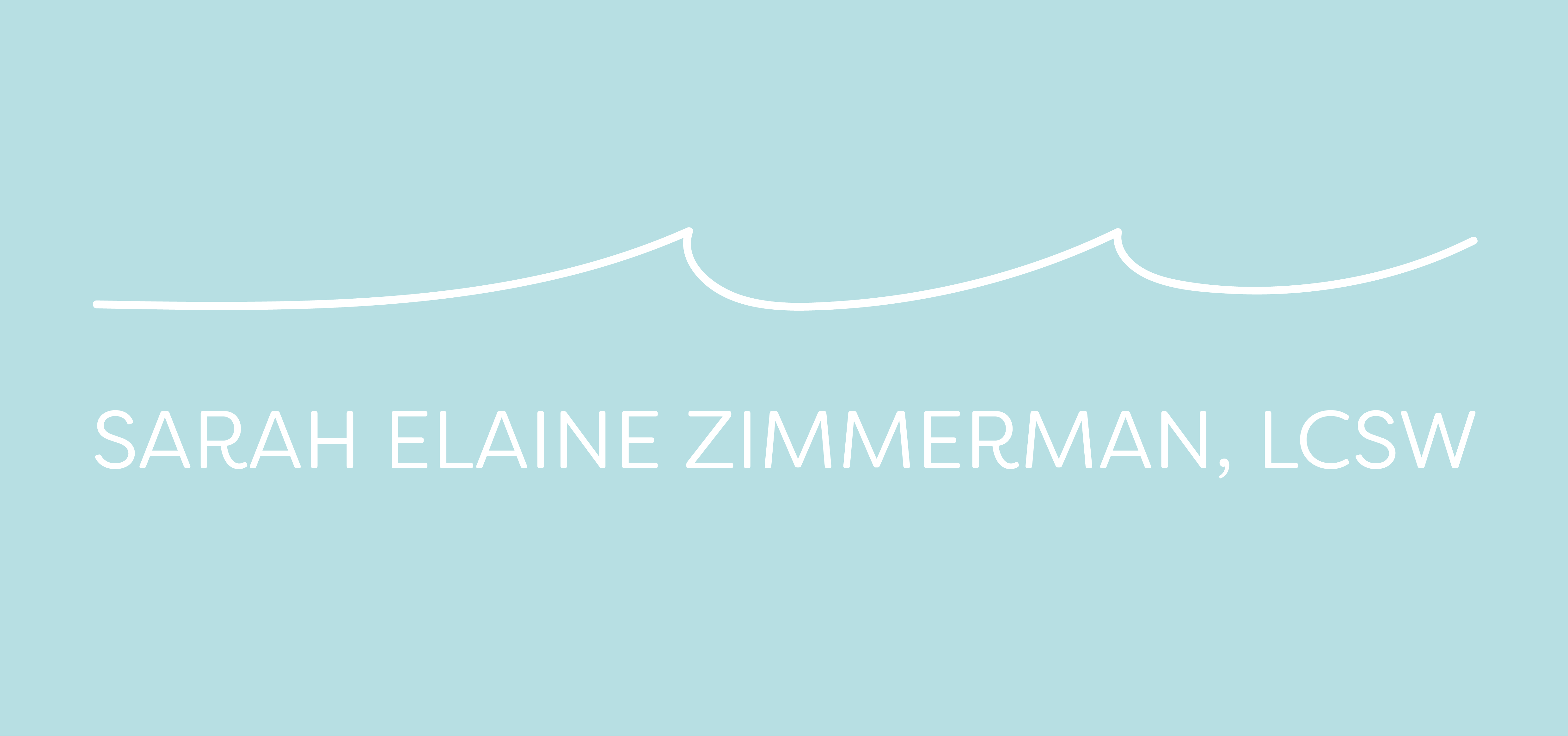By Sarah Elaine Zimmerman, LCSW
● Psychotherapy ● Self Help ●
Congratulations on taking the first step of your therapy journey! You have thought about some of your goals and what needs to change for you to feel better. You are searching for a therapist. You want to feel comfortable and to trust the person who will hear your really personal information. Ok, those were actually many steps! Great work with this so far. You may ask yourself, do I also need to know what type of therapy to choose? More research, really? That’s where I can help and provide some information and peace of mind. Let me reassure you that this is a decision you can make with your therapist throughout the therapy relationship and you really don’t need to know this at your first appointment. A good therapist will suggest the options they’ve specialized in and those methods that have good supporting research for the symptoms you want to treat. Many therapists are trained in several techniques and will offer an eclectic or integrative approach throughout your treatment.
Cognitive Behavioral Therapy (CBT) is a thoughts-based treatment and also called a top-down approach (think head/brain). If you are aware of having negative beliefs such as worry, self-criticism, doubt or perfectionism, this may be a good fit for you. This therapy works to identify, track and decrease difficult thoughts (also known as cognitive distortions, and irrational beliefs) using different ways to change or reframe the thoughts. Homework is usually part of the process, such as logging or tracking the thoughts, your emotions and behavioral patterns and sharing this in session.
Dialectical Behavior Therapy (DBT) also requires evaluating and balancing thoughts with emotions and using mindfulness techniques. There is also attention to emotion regulation to understand and decrease the suffering related to experiencing unpleasant emotions. The distress tolerance skills are great preparation (think self-soothing) for psychological emergencies and a few of these skills are referred to as “crisis survival skills”. The last module is interpersonal effectiveness which teaches self assertiveness with expressing your needs, boundary-setting and being a better listener to your partner, friends, co-workers and kids. This technique also requires some homework and tracking.
Eye Movement Desensitization and Reprocessing (EMDR) is a technique that uses bilateral stimulation of the brain with eye movements, sounds or tapping. I personally use eye movements, moving from side to side, and I may also ask you to tap your own knees or under your collar bones. The client’s safety is the priority and there is no physical contact between therapist and client. You are awake and alert for this treatment, unlike with hypnosis. This treatment is part of the adaptive information processing model (AIP) which recognizes that the brain can heal itself, or re-wire, and reprocess information. The approach is to target negative memories or can start with irrational beliefs or unpleasant feelings and physical sensations. EMDR has been extensively researched and provides an accelerated way to achieve client’s goals while desensitizing negative thoughts, emotions and physical sensations. The memory is not erased but is experienced with less intensity and clients usually feel greater control over their lives (and less triggered).
Somatic exercises focus on physical sensations (ex: tension, tingling, pain) in the body that result from stress, trauma or other conditions. This is a bottom-up (body first) approach. You may be asked to identify what it feels like and where do you feel it. The therapist leads the client through body exercises which bring awareness to the body and release of some of the unpleasant feelings being stored through stretching, breathing and touch. For example you may be directed to put your own hand on your heart or stomach while doing diaphragmatic breathing exercises.
As mentioned above, these techniques can be combined to maximize treatment results. You play the most important role in the therapeutic relationship. If you dislike a therapy or want to try a different technique, please share that with your therapist. Your input, including your comfort level and observations is extremely important for your progress. An effective treatment plan truly requires your feedback. It is adjusted throughout the process to address and measure your goals for therapy.
Questions about anything you’ve read here or that wasn’t answered? Let’s talk about it. (561) 508-8809.




